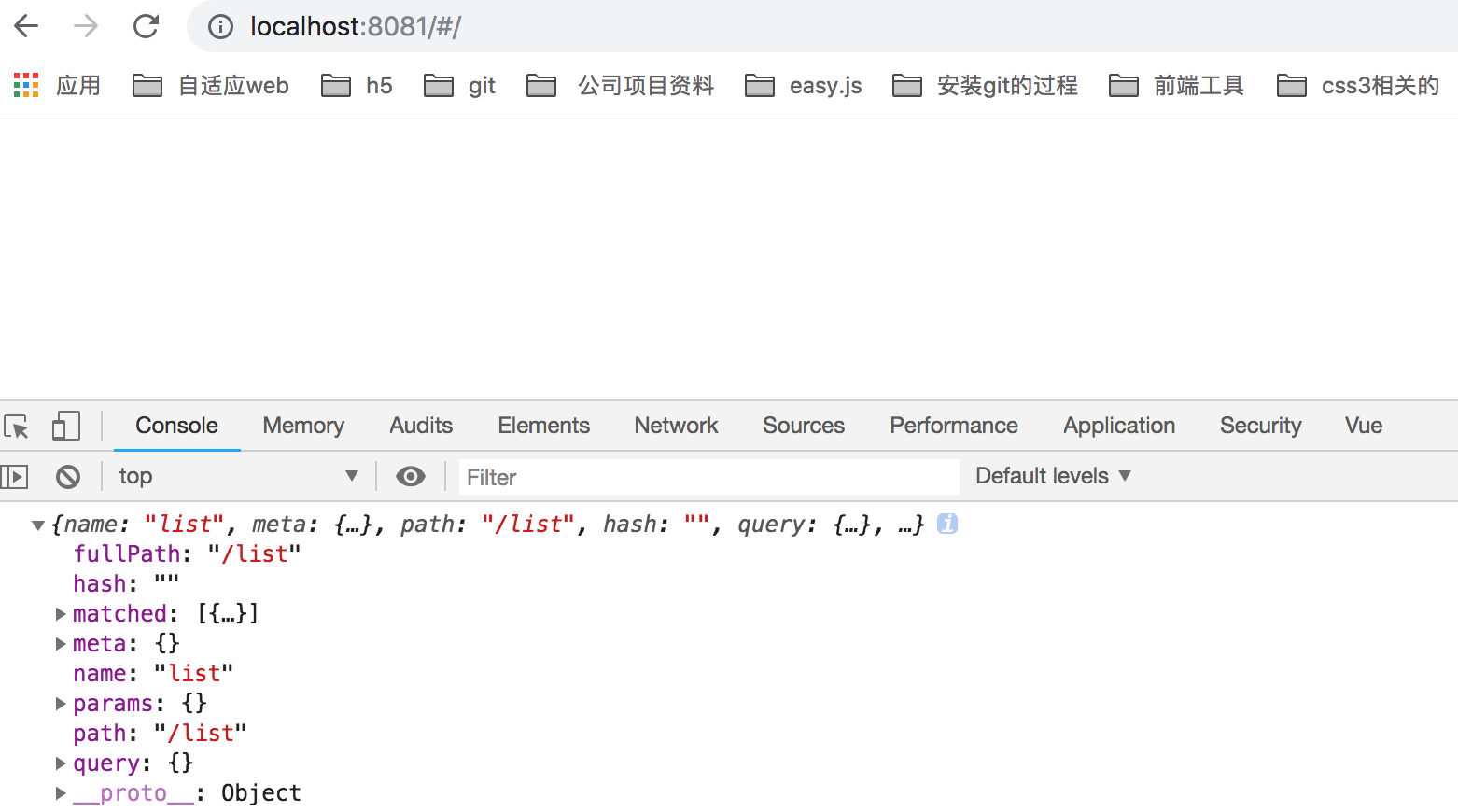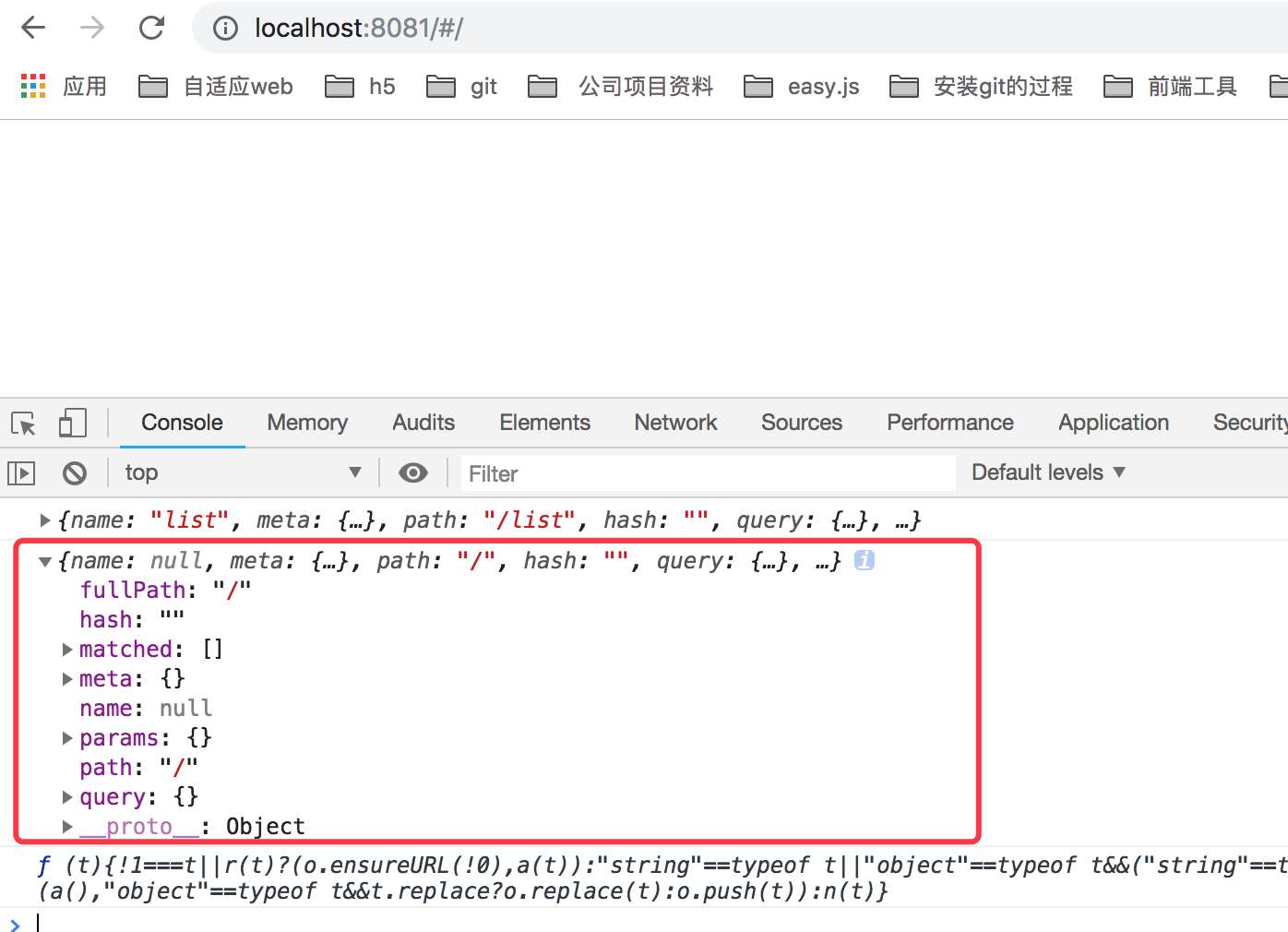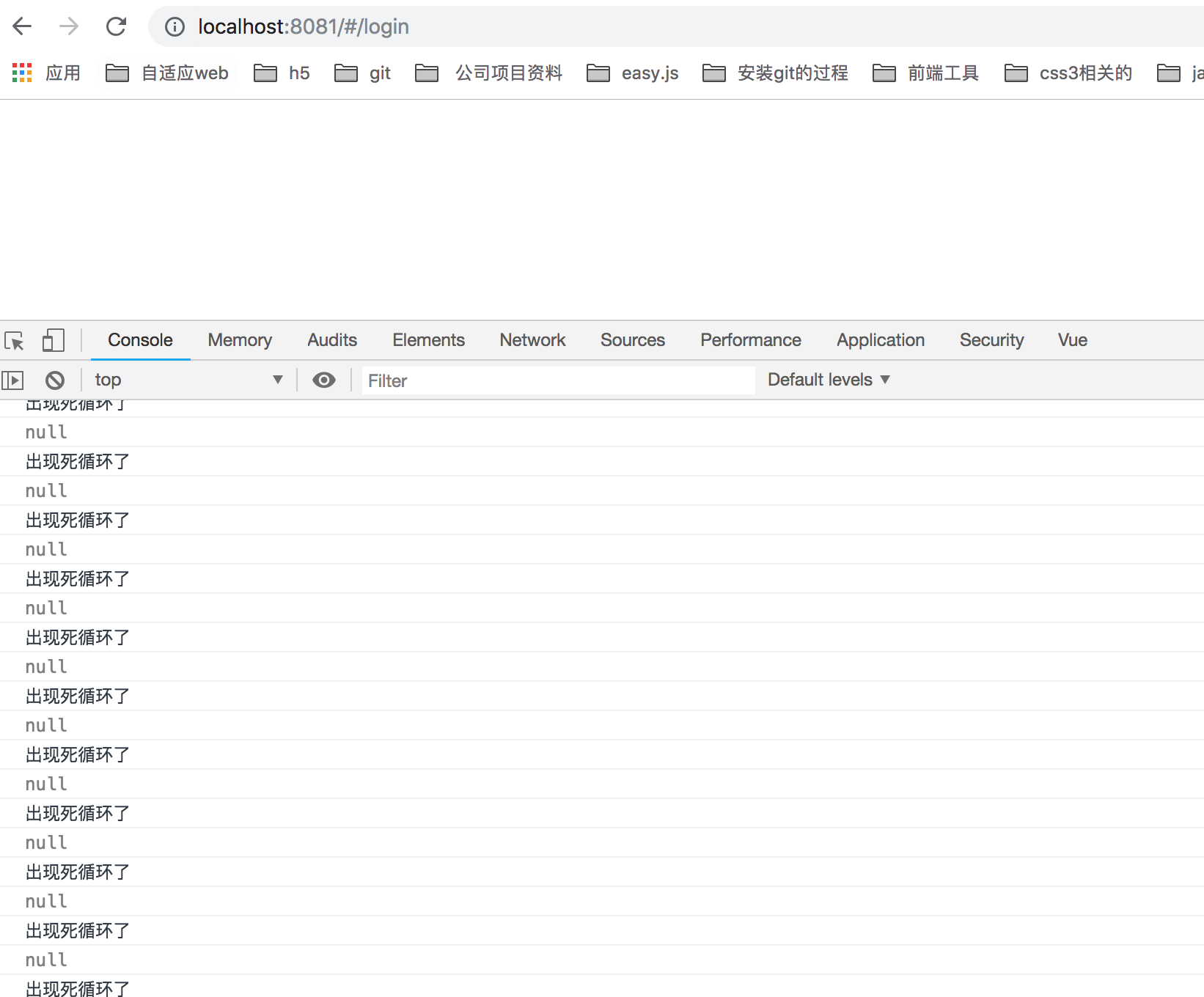在理解beforeEach无限循环之前,我们先来看一下beforeEach相关的知识点,该篇文章的项目是基于 express+vue+mongodb+session实现注册登录 这篇文章项目基础之上进行讲解的,因为登录完成后,会跳转到列表页面,那么在跳转到列表页面之前,我们会使用 router.js 使用beforeEach来判断下,如果登录成功,并且session在有效期内的话,就跳转到下一个页面去,否则的话,就重定向到登录页面去。
app/index/router.js 代码如下:
import Vue from 'vue'; import VueRouter from 'vue-router'; // 告诉 vue 使用 vueRouter Vue.use(VueRouter); const routes = [ { path: '/list', name: 'list', component: resolve => require(['./views/list'], resolve) }, { path: '*', // 其他没有的页面都重定向到 home页面去 redirect: '/login' }, { path: '/login', name: 'login', component: resolve => require(['./views/login'], resolve) }, { path: '/regist', name: 'regist', component: resolve => require(['./views/regist'], resolve) } ] var router = new VueRouter({ base: '/app/index', // 配置单页应用的基路径 routes: routes }); router.beforeEach((to, from, next) => { console.log(to); // 即将要进入路由的对象 console.log(from); // 当前导航要离开的路由对象 console.log(next); // 调用next该方法,才能进入下一个路由 next(); }); export default router;
如上代码写完成后,我们从登录页面点击登录,登录成功后,会跳转至列表页面。在跳转之前会打印上面的信息。
console.log(to); 打印的信息如下:

console.log(from); 打印的信息如下:

如上代码,调用 next()方法才能进入下一个路由,否则的如果写了beforeEach方法,但是没有调用next()方法的话,页面会空白,不会跳转到任何页面的。默认不写 router.beforeEach((to, from, next) => {}) 的话,它是默认跳转到指定页面去的,当然如果有这个方法的话,应该会覆盖默认的方法。因此如果写了调用了该方法的话,切记记得调用 next() 方法。
next(false); 如果next方法添加一个false的话,那么就会中断当前的导航跳转。修改完成后,我们重新刷新 localhost:8081/list 这个页面的话,会看到页面一片空白,最后我们打印下 console.log(to); 的信息如下:

打印 console.log(from); 打印信息如下所示:

next('/') 或者 next({ path: '/' }); 跳转到一个不同的地址,当前的导航会被中段,然后会进入 path那个新的导航。
如上是基本的beforeEach的语法,那么在具体跳转到那个页面去,我想在beforeEach中判断下,如果用户登录成功的话,并且session在有效期的话,那么就跳转到指定的页面去,否则的话,就重定向到登录页面去。
先看登录成功后的代码如下:
this.$http.post('/reglogin/login', obj).then((res) => { if (res.body.code === 0) { // 登录成功 const msg = res.body.msg || '登录成功!!!'; localStorage.setItem('username', 1); this.messageFunc('success', msg); setTimeout(() => { this.$router.push({ path: '/list' }); }, 2000); } else { // 登录失败 const errorMsg = res.body.errorMsg || '登录失败'; this.messageFunc('warning', errorMsg); } });
登录成功后,我们会把 username 保存到 localStorage 中,我们就可以在 beforeEach中来判断 localStorage 中是否有username了,当然如果登录过期的话或者注销的话,需要把本地存储的 username该字段置为null即可。
因此我router.js代码会改成如下所示:
router.beforeEach((to, from, next) => { console.log(localStorage.getItem('username')); if (localStorage.getItem('username') === null) { console.log('出现死循环了'); // 重定向到登录页面去 next({ path: '/login' }); } else { console.log('我是来测试的'); } });
如上代码后会, 当我们刷新下 http://localhost:8081/#/login 后会出现死循环,如下所示:

如上并且页面是空白的,因为当我们刷新 http://localhost:8081/#/login 后先会执行 router.beforeEach()该方法,因为我们还没有登录,所以获取到本地存储的username为null,因此一直重定向到 /login 登录页面去,因此会一直出现死循环,按道理来说重定向到登录页面去的时候,页面是登录页面,不应该是空白,但是有可能出现死循环了,导致一直重定向,最后什么原因导致空白了。
但是如果我们改成如下代码就一切正常了,如下代码:
router.beforeEach((to, from, next) => { /* console.log(localStorage.getItem('username')); if (localStorage.getItem('username') === null) { console.log('出现死循环了'); // 重定向到登录页面去 next({ path: '/login' }); } else { console.log('我是来测试的'); } */ if (true) { // 如果为true的话,会重定向到指定页面去,否则的话会重定向到登录页面去 next(); } else { next({ path: '/login' }); } });
如上代码,我直接写死了为true,则直接调用 next()方法跳转到下一个路由,就不会再调用 beforeEach()方法了。如果为false的话,则跳转到 登录('/login') 页面去。
因此为了解决 全局 判断用户是否登录跳转的问题,我们可以使用如下方法解决:
router.beforeEach((to, from, next) => { if (localStorage.getItem('username')) { // 如果已经登录的话 next(); } else { if (to.path === '/login') { // 如果是登录页面的话,直接next() next(); } else { // 否则 跳转到登录页面 next({ path: '/login' }); } } });
当然在登录接口中,登录成功后,要使用 localStorage 保存用户名,如下 app/index/views/login.vue 接口如下代码:
this.$http.post('/reglogin/login', obj).then((res) => { if (res.body.code === 0) { // 登录成功 const msg = res.body.msg || '登录成功!!!'; // 这里需要使用 localStorage 保存用户名 localStorage.setItem('username', 1); this.messageFunc('success', msg); setTimeout(() => { this.$router.push({ path: '/list' }); }, 2000); } else { // 登录失败 const errorMsg = res.body.errorMsg || '登录失败'; this.messageFunc('warning', errorMsg); } });
当然 点击注销的时候 也要删除该 username了,如下代码:
// 注销 logout() { this.$http.post('/reglogin/logout', {}).then((res) => { if (res.body.code === 1 && res.body.session) { // 说明注销成功 跳转到登录页面去 this.$message({ message: '注销成功', type: 'success' }); localStorage.removeItem('username'); setTimeout(() => { this.$router.push({ path: '/login' }); }, 1000); } }); }
我们首先看 beforeEach 代码,
router.beforeEach((to, from, next) => { if (localStorage.getItem('username')) { // 如果已经登录的话 next(); } else { if (to.path === '/login') { // 如果是登录页面的话,直接next() next(); } else { // 否则 跳转到登录页面 next({ path: '/login' }); } } });
to 参数是到哪里去的含义,因此当我们刷新登录页面的时候,from 的值路径为 '/', to 的path为 '/login', 因此调用next方法,还是登录页面,不会出现死循环,和我们上面讲的如下代码原理是一样的:
router.beforeEach((to, from, next) => { if (true) { // 如果为true的话,会重定向到指定页面去,否则的话会重定向到登录页面去 next(); } else { next({ path: '/login' }); } });
然后当我登录成功后,/login 接口会使用 localStorage 保存username信息,然后在跳转页面之前会继续调用 beforeEach方法,然后会判断:
if (localStorage.getItem('username')) { // 如果已经登录的话 next(); }
说明有username的值,会执行下一个路由跳转,因此能跳转成功。